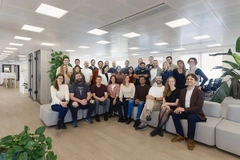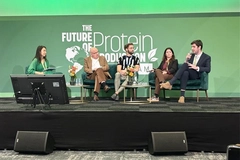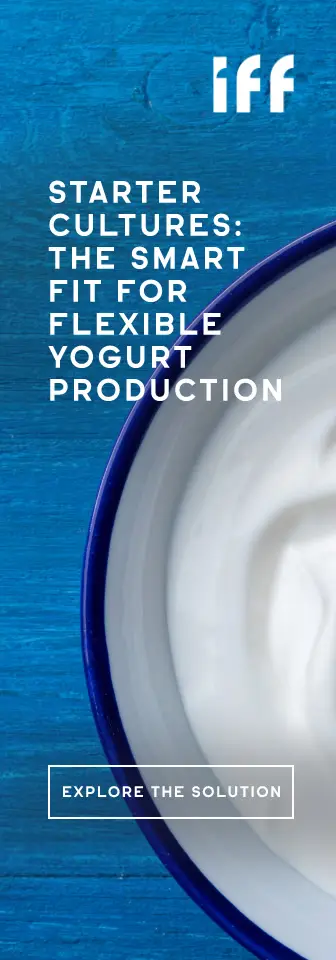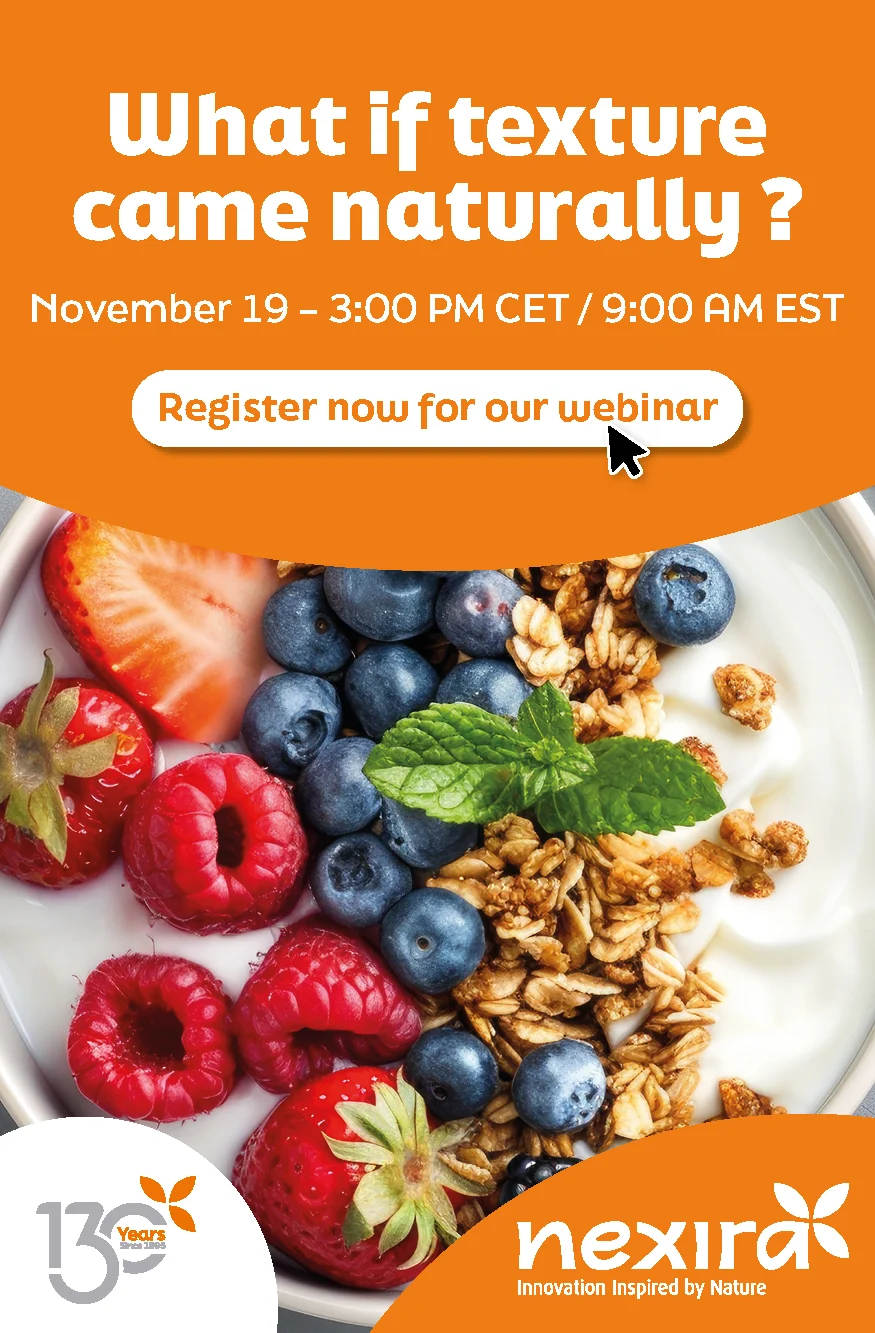Cultured Meat Researchers Form University Spin-Off Company, Set 5 Year Target for Commercial Applications
19 Oct 2015 --- The commercial sale of lab grown hamburgers to affluent and adventurous consumers could be just 5 years away, claims the Maastricht University researcher, who has led work into the highly innovative field of in vitro meat research. Two years after a US$250,000 artificial meat hamburger was presented to the world’s media to much hype, the technology has entered a new stage, with commercial viability moving significantly closer.
Speaking to FoodIngredientsFirst after a press conference that preceded the 1st International Symposium on Cultured Meat, Prof. Mark Post of Maastricht University (pictured below) revealed the launch of a new company to initially be called MosaMeat ["mosa" is the Latin name for the river running through Maastricht], which he will co-head together with CEO Peter Verstrate, and will be founded at the university. “We target that within 5 years we will have a product on the market that is both approved and the result of large-scale production. We think that we can have that scale in place in 1-2 years and then have that regulatory approval, so that we can have the first product on the market in 4-5 years.”

The company is currently looking for €6 million in funding for the first 3.5-4 years of development work, with the hope of building a bioreactor in or around the campus that would initially produce 5,000 liters of material, before upscaling to 25,000 liters. At 5,000 liters, the technology would still be far too small scale to be put onto the market, but if a 25,000 liter bioreactor could be put into action, a kilo of artificial beef product that would be suitable for hamburgers, could be produced for about €60 per kilo. This is a 30x factor on conventional beef, which has a current market level of €2 per kilo. But at this level, it would be enough to feed 10,000 people per year with beef by European standards, and it could therefore be put on sale at exclusive restaurants at a high, but no longer ridiculous price level. Taking continued technology development in the area into account, the company may be able to produce artificial beef at the same price level as conventional beef, just 5 years further down the line.
The process for creating cultured beef relies on taking muscle cells from a cow, which are cultured in a laboratory by scientists who place them in a nutrient solution to create muscle tissue. The tissue is grown by placing the cells in a ring, like a donut, around a hub of gel. The muscle cells grow into small strands of meat. Some 20,000 such strands are need to make one 140g (approx. five ounce) burger.
Speaking about the recent progress, Post explained: “We launched the proof of concept in London 2 years ago, and we realized that the product wasn’t perfect. We needed serum to grow the cells, there was no fat in it and we had no large scale production. We have worked on all those areas. We have grown cells without serum. It is not perfect yet, but it is improving. We are growing fat cells and tissue, so that we can mix it with skeletal muscle to get a better product. And we are starting to scale up these development technologies.”
Post noted that the spin-off company of the university is primarily aimed at scaling up production, which you cannot do within the walls of an academic establishment. “You will need larger scale investments, but also a different set-up. And we will have to go through regulatory approval, so that is being done within the company,” he commented.
MosaMeat CEO Peter Verstrate noted that a detailed research plan is in place for the company, with several parallel running research streams, in terms of protein content, fat tissue and the color of the meat. “These are all types of aspects that you need to work on in order to get a competitive hamburger or sausage. We plan that in about 3-4 years to have a competitive product and then take the next step into upscaling the process to the largest scale bioreactor available today at 25,000 liters,” he noted.
“Based on current technology and cost of feed at the optimum price today, it would be about US$65 per kilo, which is a lot of money,” he admitted. “But we also know that we can improve culture conditions and we are also quite sure that we can improve the cost of the medium by at least 10 fold. So while the products will first be launched as a premium product, within 5-10 years from now, the level will go down to a level that is competitive with conventional beef.”
For Verstrate, the hosting of the symposium now marks the beginning of the group’s endeavors to find the funding. “We are currently in contact with several parties who have shown an interest in what we are doing. So while we haven’t secured the funding yet, we are confident that we can do so in the coming months,” he revealed. Funding interest so far has come from both individuals and companies.
Verstrate admitted that consumer acceptance will be a big challenge, but there are also concerns about beef in general, as particularly European consumers reduce their consumption, due to either health or sustainability concerns. “Both the acceptance of our product and the acceptance of traditional beef are up for debate. More and more there is an awareness that traditional beef is a big burden on the ecosystem, but for sure there is still a large percentage of the population that is hesitant to try our product. So far from the small tests that we did we found that 50-60% of consumers are willing to try it today. But it is based on a product that is not around yet, nor without explaining to the consumer what the technology really is about.”
The consumer research that he is referring to was conducted by a team headed by Prof. Wim Verbeke of Ghent University in Belgium in December 2013, but only recently analyzed at a detailed level. Verbeke’s team looked at the opinions of 400 representative consumers in the Flanders area of Belgium. Interestingly, men were 3-5 times more likely to try in vitro meat than women, while younger consumers were more likely to try it out than older. Concerns about the environment and sustainability dominated the agenda, with Verbeke speculating when asked, that male consumers may be more adventurous than women to try out these things, and be less prone to considering the “yuck” factor that may come with a lab grown meat.
For the medium term, Post believes that consumer acceptance will not to be a major source of concern, however. “For that initial product, which will be high-end anyway and rather expensive, we will have lots of interested volunteers who are adventurous. So we are talking here about mainstream acceptance, and this relies on the feeling that it is safe. A gradual acceptance will take time, but also rely on the early adopters to pass the message. For that to happen, the taste and cost will also need to equivalent to a current product."
Maastricht University’s focus for now will be on replicating beef in a lab, even though the challenge of creating an artificial steak, as opposed to a hamburger, is more of a long term dream. Conventional beef production requires very high levels of energy expenditure and is therefore quite damaging to the environment. Calculations from the University of Oxford have shown lab grown meat to potentially be 60% lower in carbon emissions. Chicken and fish protein are much less energy intensive, with Post noting that pork protein falling somewhere in the middle between beef and chicken.
But this does that mean that other researchers, with different targets, are not looking into these areas too. Based on essentially the same technology, Post noted that there is other work taking place around the world into replicating animal proteins. “Other people in Tel Aviv are now working on a chicken, people in Scandinavia have worked on a fish application, while others in Melbourne are working on a fish application. They are all valid for different reasons, but we have chosen beef due to the environmental burden related to beef production.”
He explained the different rationales for lab meat research. “If your primary target is animal welfare, chicken is a much better applications, because of the larger number of animals that die in the livestock industry. And if you are worried about biodiversity, maybe whale or tuna is a better approach. So it depends on what your initial target is,” he noted.
by Robin Wyers in Maastricht
A video with Mark Post can be viewed here: https://www.foodingredientsfirst.com/Videos/Progress-in-Artificial-Meat-Creation.html














